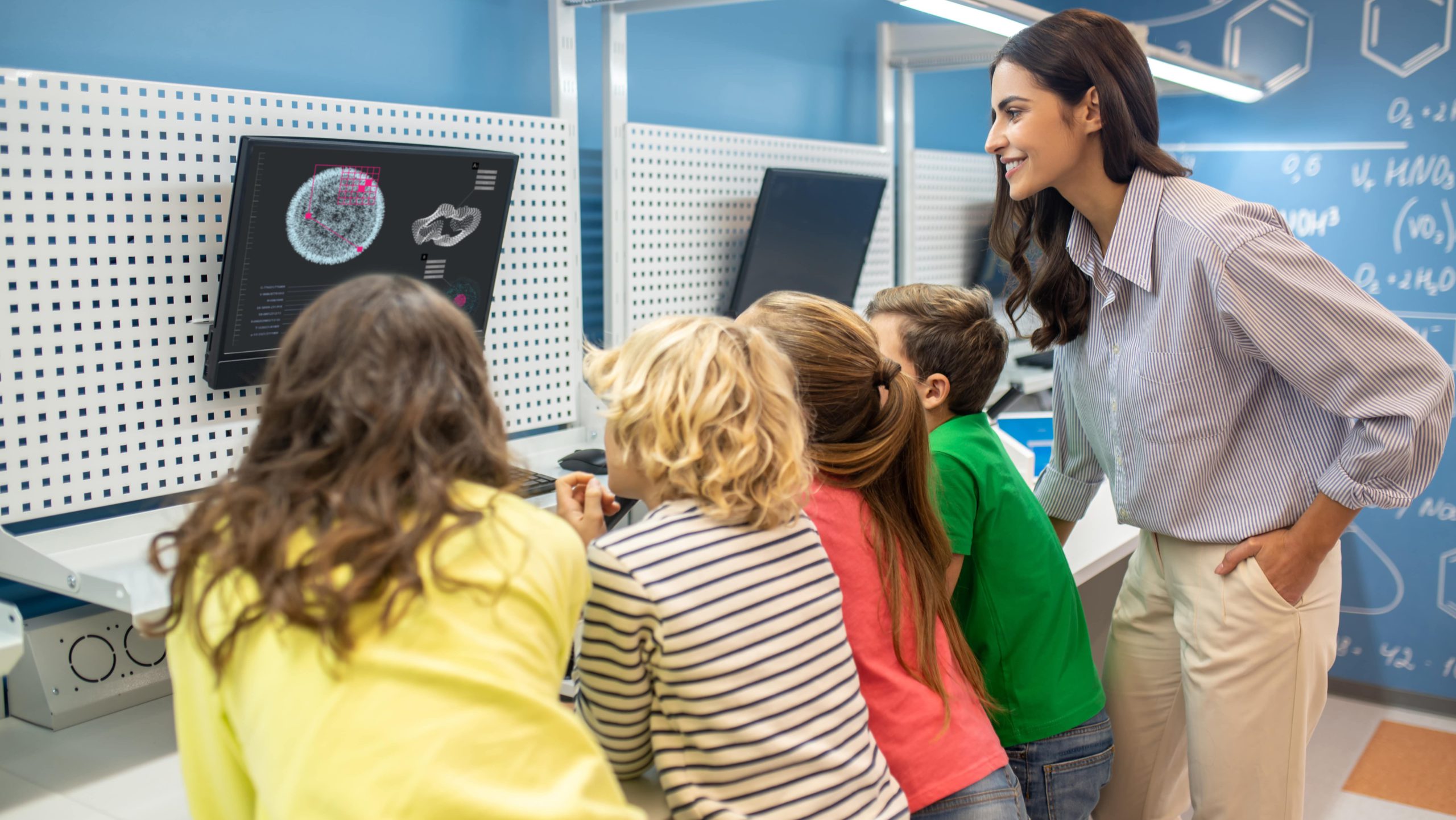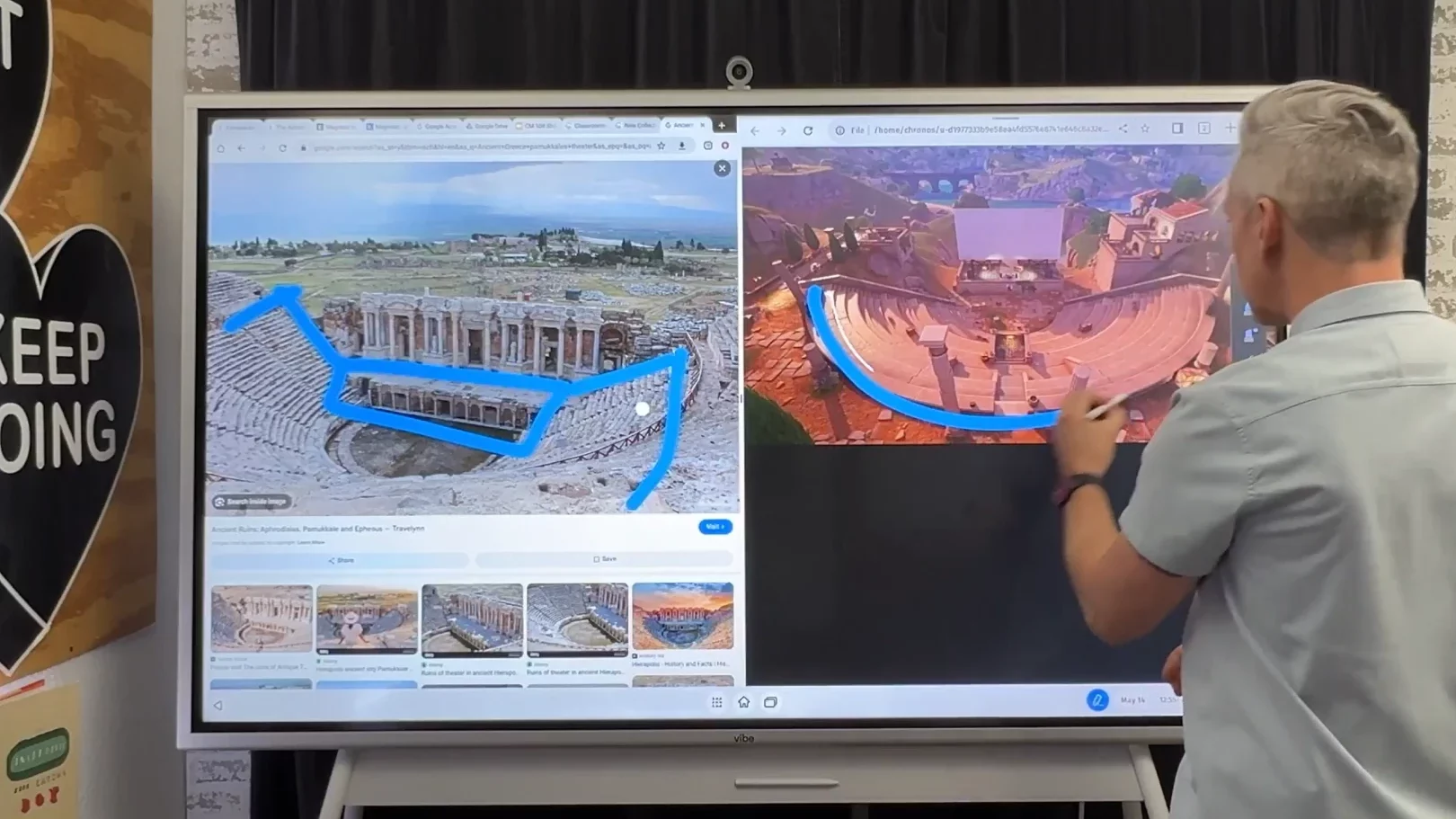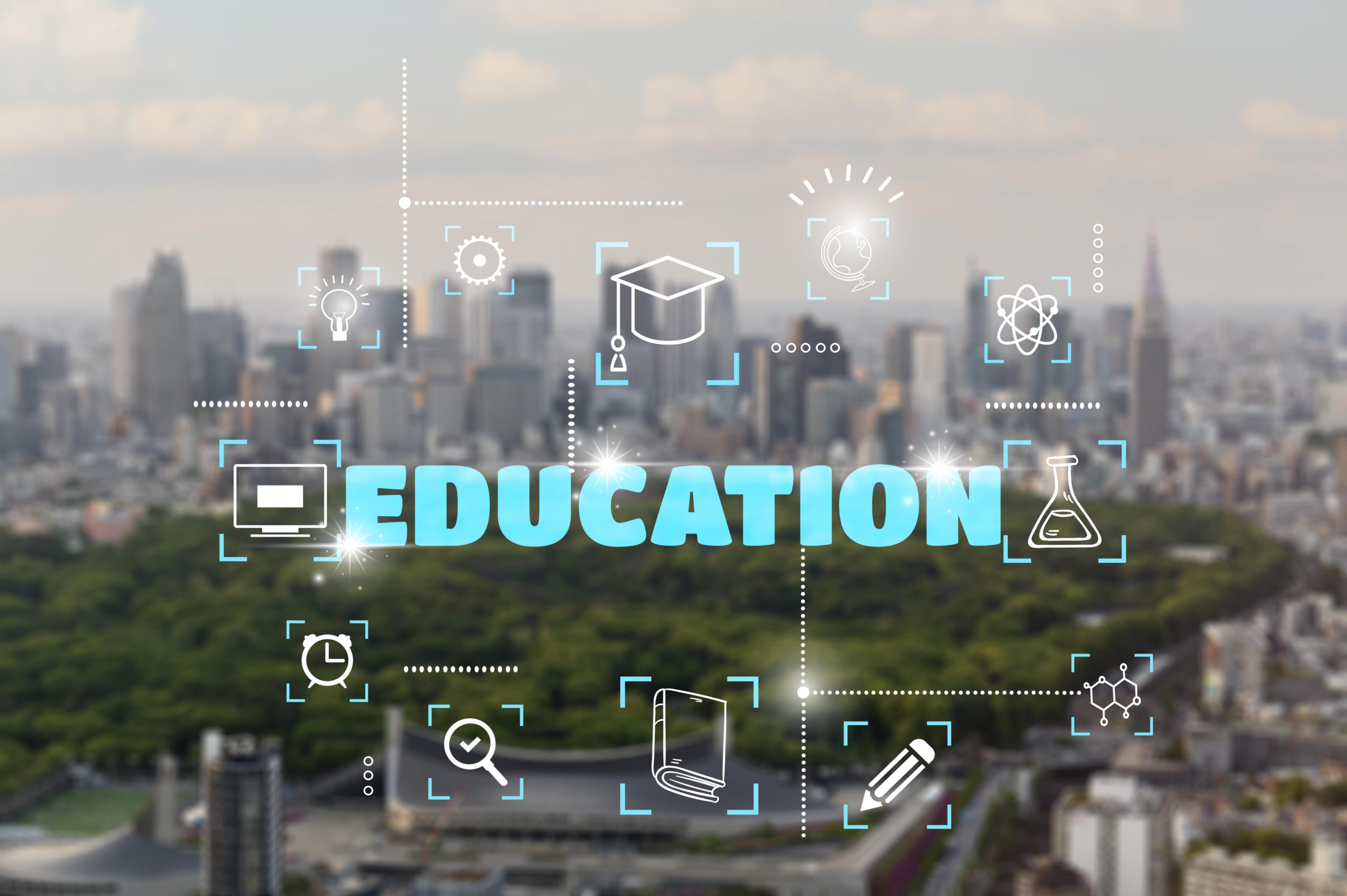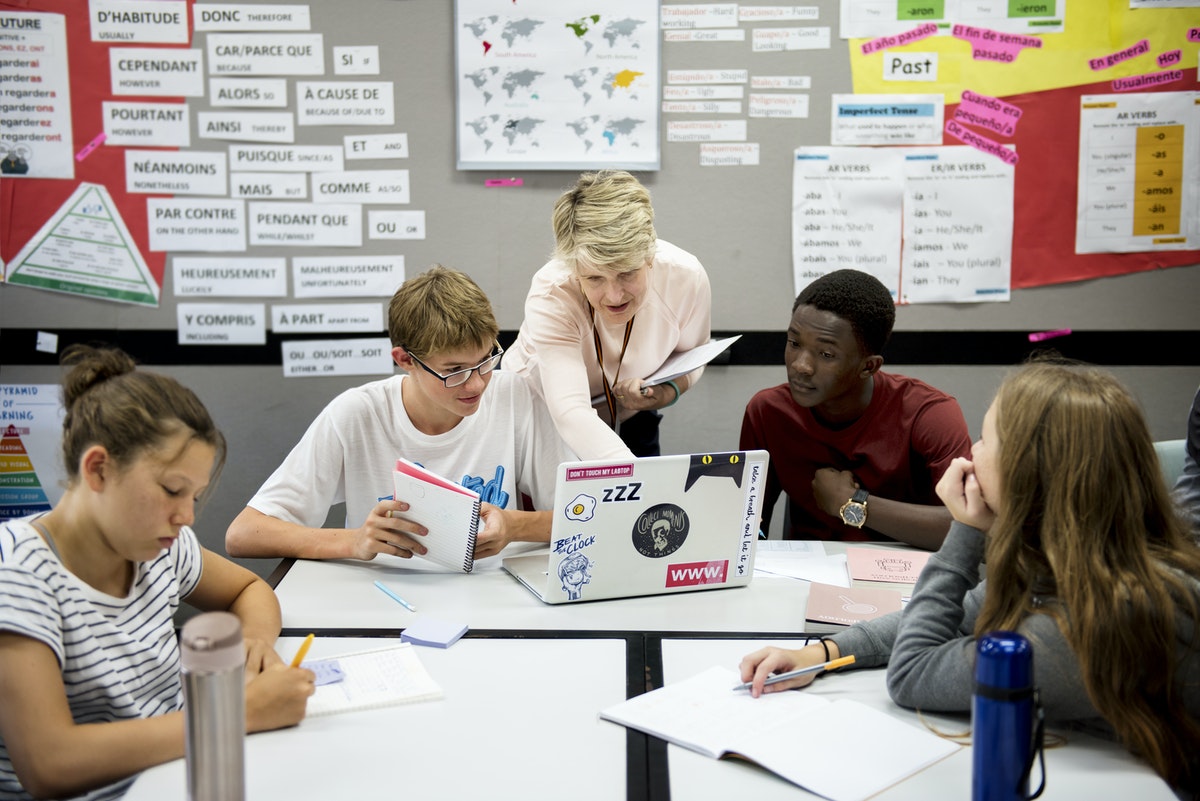Traditional classroom setups often struggle to maintain student attention and increasingly suffer from low knowledge retention rates. Interactive learning transforms this by turning one-way lectures into vibrant exchanges where ideas flow freely between all participants. It creates spaces where knowledge isn’t just transmitted from teacher to student but circulates in all directions. Teacher to student, student to teacher, and perhaps most valuably, student to student.
What is Interactive Learning?
Interactive learning is a teaching approach that actively engages students in the learning process through participation, collaboration, and critical thinking, requiring them to be active participants rather than passive recipients of information. It involves students directly shaping their learning journey through discussions, hands-on activities, and the use of digital tools, acquiring knowledge through an interactive experience that promotes understanding and enjoyment of learning.

Think about the difference between sitting through a lecture versus engaging with peers through a touchscreen, contributing ideas to a shared digital canvas, or solving problems collaboratively. Interactive learning is built around three key components: collaborative tools like digital whiteboards where everyone can contribute simultaneously, participatory activities that engage all learners, and immediate feedback mechanisms that allow instant assessment of understanding. When these elements combine effectively, students don’t merely memorize rote information for tests; they construct knowledge through active engagement, questioning, and creation.
Benefits of Interactive Learning
Enhanced Student Engagement
In traditional settings, students’ attention often wanders during passive lectures. Interactive learning addresses this challenge directly. Students become mentally invested in the learning process when they can physically use technology to:
-
Build molecular models
-
Highlight key points
-
Comment on shared texts
-
Contribute to group mind maps
-
And much more
There’s something compelling about manipulating objects on a screen or adding to a collaborative space that captures attention in ways passive listening or watching never could. This hands-on engagement keeps minds focused and curiosity active throughout class.
Improved Knowledge Retention
Many of us have experienced nodding along to a lecture, thinking we understand, only to forget the material shortly afterward. Interactive learning addresses this common problem by leveraging what cognitive scientists have known for decades: we remember what we do far better than what we’re told. When learners actively participate by drawing connections on diagrams, explaining concepts to peers, or working through problems together, they create memory traces through multiple pathways. The combination of visual elements, physical movement, and verbal processing creates multiple retrieval cues that significantly boost retention compared to just listening.
Development of Critical Thinking Skills
Memorizing facts represents just the beginning of learning. The real value lies in developing critical thinking, and interactive environments excel at cultivating these skills. When students collaborate on a digital whiteboard to map solutions to complex problems, they move beyond simple recall to analyzing situations, evaluating options, and synthesizing information. These open-ended exercises encourage learners to:
-
Question assumptions
-
Consider alternative viewpoints
-
Develop reasoned arguments
-
Build digital literacy skills
Interactive tools make thinking visible and shareable, allowing students to build upon each other’s insights and collectively reach deeper understanding.
Collaborative Learning Opportunities
Modern interactive learning tools effectively remove barriers between students and teachers, whether they’re across the room or continents. When using a shared digital space with multiple users contributing simultaneously to the same lesson or project, ideas flow naturally and build upon each other in real time. Someone sketches an initial concept, another refines it with annotations, while a third adds supporting research from a quick search. This all happens easily without the interruptions of traditional turn-taking. This collaboration bridges physical distances in hybrid settings. It makes sure that remote students contribute just as meaningfully as those physically present in class.

Personalized Learning Experiences
One teaching approach rarely suits all learners. Interactive learning excels in its adaptability to different learning styles and paces. Visual learners gravitate toward graphical representations on digital boards, while auditory learners benefit from recorded discussions they can revisit. Kinesthetic learners engage through touch interfaces and movement-based interactions. The flexibility of digital tools allows students to:
-
Review challenging concepts
-
Explore areas of interest
-
Progress quickly through familiar material
This is all done while teachers monitor progress and provide targeted support where needed. This personalization transforms learning from a rigid process to an adaptable journey tailored to individual needs. Interactive learning tools like the Vibe Board S1 empower teaching strategies like SAMR that build technology into the classroom for more tailored instruction.
Real-time Feedback and Assessment
The immediate feedback loop created by interactive learning tools fundamentally changes the assessment landscape. Teachers can observe in real time how students interact with material through their digital contributions, responses to quick polls, or approaches to collaborative problem-solving. This instant visibility into student thinking allows educators to address confusion immediately, before misconceptions become entrenched. For learners, this quick feedback validates correct thinking and gently reinforces missed concepts, creating an environment where mistakes become valuable learning opportunities rather than sources of anxiety.
Vibe Board S1: Boost Interactive Learning Engagement
The Vibe Smart Whiteboard S1 is an all-in-one collaboration hub that combines a 4K UHD touchscreen display (available in 55″ or 75″ sizes) with an intuitive operating system based on ChromeOS, offering seamless integration with over 250 productivity apps including Microsoft Office and Google Workspace. With features like 20-point multi-touch capability, AI-powered handwriting recognition, and cloud-based infinite canvas accessible from any device, the Vibe S1 transforms traditional teaching spaces into dynamic, interactive environments. Trusted by over 40,000 leaders, the Vibe Board S1 streamlines collaboration through its digital whiteboarding capabilities and comprehensive connectivity options, a powerful tool for modern educators seeking to create engaging, technology-enhanced learning experiences.
Infinite Canvas with Real-Time Collaboration
Interactive learning removes the constraints of physical space with digital canvases that expand to accommodate growing ideas. No more erasing valuable content to make room for new thoughts. With platforms like Vibe, students and teachers can join the collaborative interactive learning from any device, whether standing at the main board, joining via laptop browser, or contributing through tablet or phone. Teachers can leverage the Vibe Board S1’s infinite canvas to display lesson content and facilitate activities, or zoom out for an entire semester’s curriculum mapping and zoom in for today’s specific lesson. Every contribution is automatically saved to the cloud, preserving the collaborative journey and allowing students to revisit and build upon previous work without fear of losing valuable learning.
AI-powered Tools for Clarity
Even brilliant ideas can get lost in messy handwriting or imprecise sketches. Modern interactive boards address this challenge with AI tools that transform handwritten notes into legible text and rough shapes into perfect ones, all without interrupting creative flow. These features keep student work sessions focused on content rather than form, ensuring that rapid brainstorming remains readable and organized. When learners can contribute without concern about their handwriting or drawing abilities, they engage more readily with ideas, questions, and connections. Text-to-speech functionality further enhances accessibility by converting written content into spoken words, allowing students to hear the pronunciation of unfamiliar terms and supporting diverse learning needs. This technology is particularly valuable for students with dyslexia or visual impairments, as it provides an alternative way to access and understand content while simultaneously developing their listening comprehension skills.
Built-In Multimedia Integration
Today’s learning encompasses multiple media types, from videos and slides to documents and more. Interactive learning platforms seamlessly integrate these various content forms and third-party applications directly into the collaborative environment. Need to reference a Google Doc? Pull it right onto the canvas. Want to analyze a YouTube video together? Cast it to the board and annotate key moments in real time. This integration eliminates disruptive transitions between platforms that often interrupt learning flow, creating instead a cohesive experience where different media types enhance rather than fragment the lesson.
Support for Hybrid Learning
The modern learning environment extends well beyond physical classroom walls, and interactive tools ensure that distance doesn’t diminish participation. AI-powered cameras that automatically frame speakers and high-quality omnidirectional microphones ensure that remote participants catch every nuance of the discussion. Meanwhile, screen-sharing capabilities with real-time annotation allow distant collaborators to contribute just as actively as those in the room. This technology transforms hybrid learning from what could be a disconnected experience into a truly inclusive collaboration, where geography becomes irrelevant to meaningful participation.
Split-Canvas Mode
Split-canvas functionality represents perhaps the most transformative feature for maintaining both structure and spontaneity in interactive learning. On one side of your digital board, keep the backbone of your lesson intact. This includes your prepared slides, reference images, or instructional video. While the other side becomes a dynamic workspace for real-time ideation and discussion. As educator CJ Reynolds demonstrates in his classroom, this feature allows teachers to make powerful connections between curriculum content and student interests (comparing Roman architecture with Fortnite designs, for example), driving deeper engagement and understanding. Students can annotate key points from the presentation, add questions on sticky notes, or collaborate on applying concepts without disrupting the core material. This approach eliminates the constant toggling between presentation and discussion that often fragments learning experiences, creating instead a seamless flow where formal content and collaborative exploration enhance rather than interrupt each other.

Bring Learning to Life with Interactive Technology
Interactive learning fundamentally reshapes the educational experience by placing collaboration, participation, and engagement at its center. From boosting retention through active involvement to developing critical thinking through collaborative problem-solving, the benefits extend far beyond simple knowledge transfer. The technology that enables this approach, particularly flexible tools like split-canvas functionality, bridges the gap between structure and spontaneity, allowing for both guided learning and creative exploration in the same space. Whether you’re teaching in a traditional classroom, managing remote teams, or navigating the complexities of hybrid environments, interactive learning tools adapt to your needs while keeping human connection at the heart of the experience. Ready to transform your teaching or training approach? Explore what the Vibe Board S1 can bring to your interactive learning environment and watch engagement and outcomes soar.









-1sbltxxq4FYxHrXrwJVLsCDNsXpqNa.webp)
-5Zp0pmSytvcuYDVs1LvuwplKuRneK0.webp)
